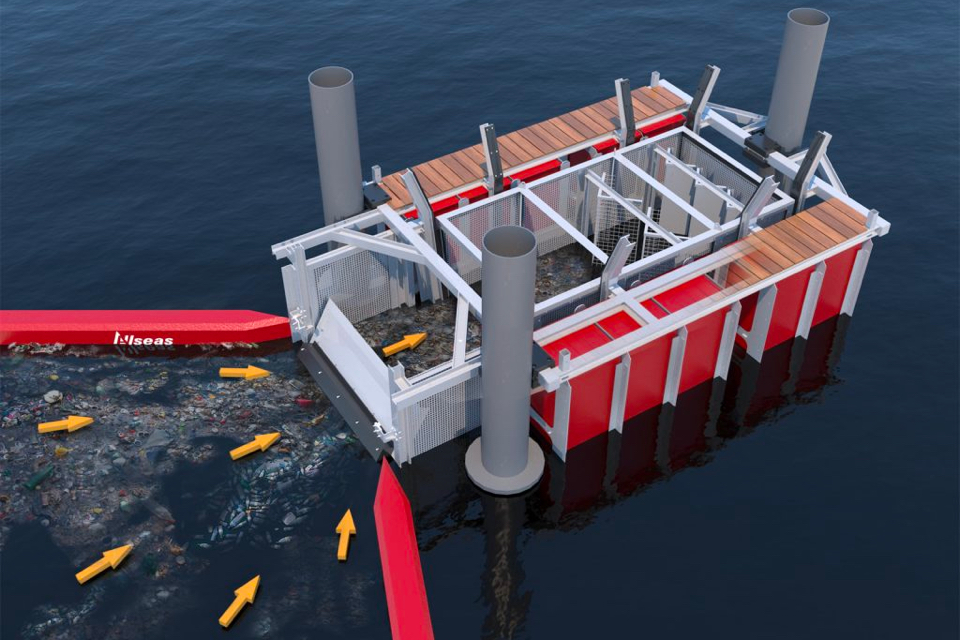Using the wind and currents to intercept waste, Allseas has revealed a new waste collection system for rivers called Catchy. The system is designed to catch both large waste floating on the surface and smaller debris – mainly plastics – suspended in the water column.
Rijkswaterstaat, the Dutch authority for public works and water management, commissioned Allseas to develop the system. Aim of the system is to catch the waste in rivers before it can spread to the sea.
Later this month, Catchy will be installed in the Vijfsluizer harbour, between the cities Schiedam and Vlaardingen, on South Holland’s Nieuwe Maas River. The predominant southwest wind drives waste into the Vijfsluizer harbour making it a “hotspot” for (plastic) waste and litter. North of the harbour lies a preserved natural area that is home to wildlife such as seals, marine birds and fish. The system is to prevent waste from reaching this area and the neighbouring North Sea.
How the waste collection system works
The system comprises three elements: two floating booms, a floating frame and collection cage. The floating booms, 200 and 10 metres in length, guide waste towards the collection cage. This process works entirely on wind and currents. Both booms are equipped with an underwater skirt to catch both surface and submerged waste. The floating frame is secured to piles that allow it to move vertically with the tides. Waste captured in the cage is emptied regularly into a container, which is transported by truck to a site for processing.
The system is to become operational in August 2020 and will remain in the Vijfsluizer harbour for one year. In addition to the development and installation of the system, Allseas will analyse the collected waste to provide Rijkswaterstaat with information on the types and amounts of plastics and recommendations for sustainable and cost-effective post-processing possibilities.








